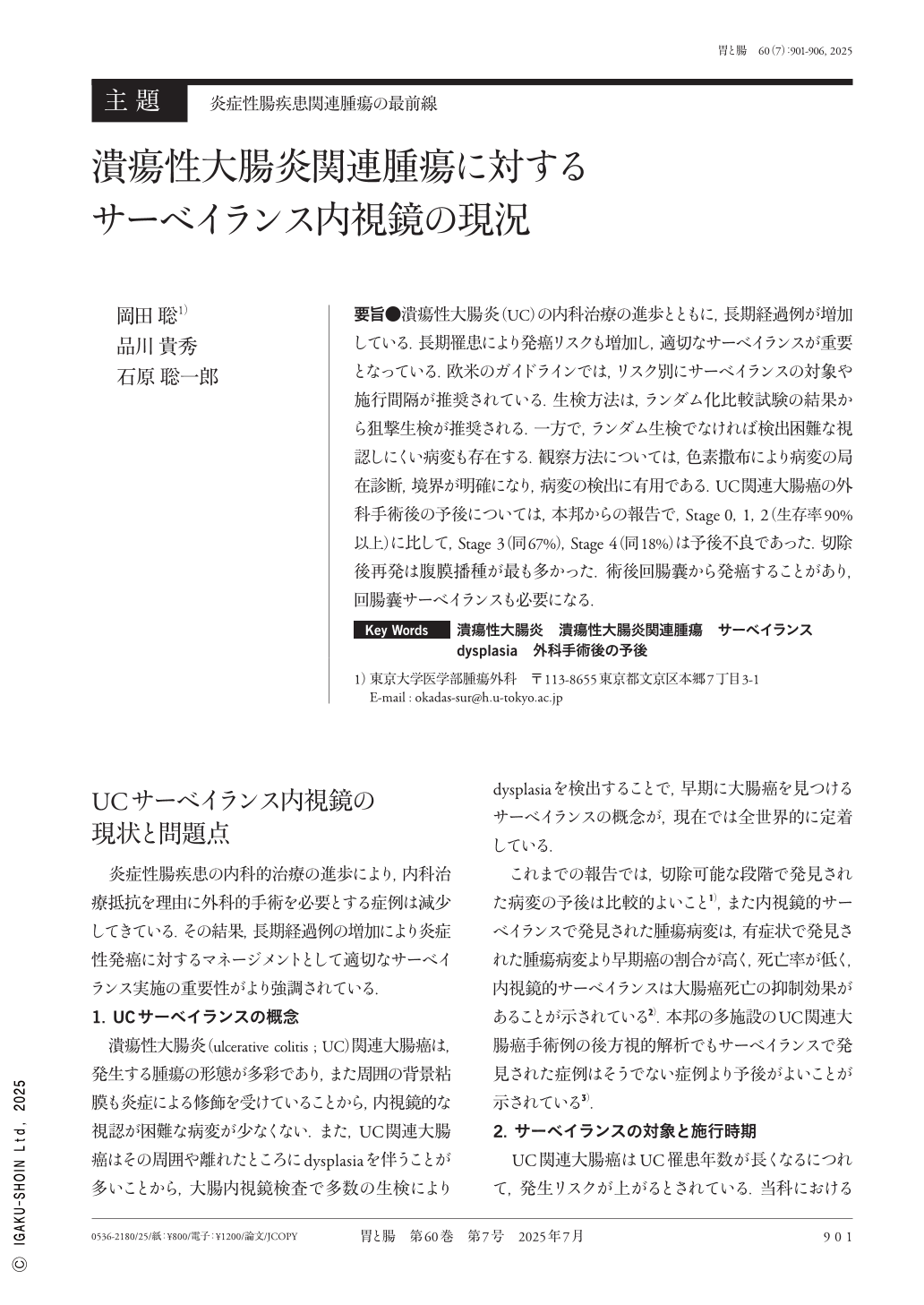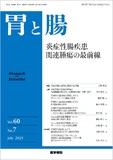Japanese
English
- 有料閲覧
- Abstract 文献概要
- 1ページ目 Look Inside
- 参考文献 Reference
要旨●潰瘍性大腸炎(UC)の内科治療の進歩とともに,長期経過例が増加している.長期罹患により発癌リスクも増加し,適切なサーベイランスが重要となっている.欧米のガイドラインでは,リスク別にサーベイランスの対象や施行間隔が推奨されている.生検方法は,ランダム化比較試験の結果から狙撃生検が推奨される.一方で,ランダム生検でなければ検出困難な視認しにくい病変も存在する.観察方法については,色素撒布により病変の局在診断,境界が明確になり,病変の検出に有用である.UC関連大腸癌の外科手術後の予後については,本邦からの報告で,Stage 0,1,2(生存率90%以上)に比して,Stage 3(同67%),Stage 4(同18%)は予後不良であった.切除後再発は腹膜播種が最も多かった.術後回腸囊から発癌することがあり,回腸囊サーベイランスも必要になる.
Long-standing ulcerative colitis(UC)is associated with an increased risk of colorectal cancer(CRC), and surveillance colonoscopy should be performed at 1−5-year intervals based on the CRC risk factors, including the burden of colonic inflammation, family history of CRC, primary sclerosing cholangitis, and history of colorectal dysplasia. Targeted biopsies should be performed in patients with suspicious mucosal findings of dysplasia. Dye spray chromoendoscopy should be considered in patients undergoing surveillance colonoscopy, whereas virtual chromoendoscopy is a suitable alternative high-definition endoscopic approach for dysplasia detection.
The overall survival, which was good in patients with stage 0−1 UC-associated CRC, was significantly worse in those with stage 2−4 UC-associated CRC. The most frequent location of recurrence was the peritoneal region in patients with UC.
Pouch surveillance should be performed in patients at high risk for colorectal dysplasia as well as in those with persistent moderate/severe pouchitis.

Copyright © 2025, Igaku-Shoin Ltd. All rights reserved.


